I'm trying to create a custom lick-port to detect mouse licking behavior. I am following a design published here that uses the junction potential between the mouse's tongue and the metal water spout to detect when a lick occurred, see image below:

To do this, I'm acquiring the voltage signal as an analog input to a National Instruments DAQ card (PCIe-6363) via an NI breakout box (model SCB-68). I'm reading out the voltage using Matlab R2014a, using the DAQ toolbox to read out voltage from the analog input (ai) channel on the NI DAQ card.
My problem is that when the circuit is open, the voltage is slowly drifting to a particular value over about 8 minutes (it looks to be around 2.8V):

What I really want this system to do is have a voltage of 0 until the circuit is closed, at which point I can detect a junction-potential that signifies a lick. So, why is this drift occurring? What can I do to prevent it during the open-circuit condition?
Here is a sample of what happens when I hold the ground in one hand, and touch a wetted finger to the + wire. Each sharp drop coincides with the circuit closing:

Now, I could still potentially use this, just by calculating the derivative and seeing when that exceeds some threshold, but I want to know why this isn't working as expected.
Thanks!